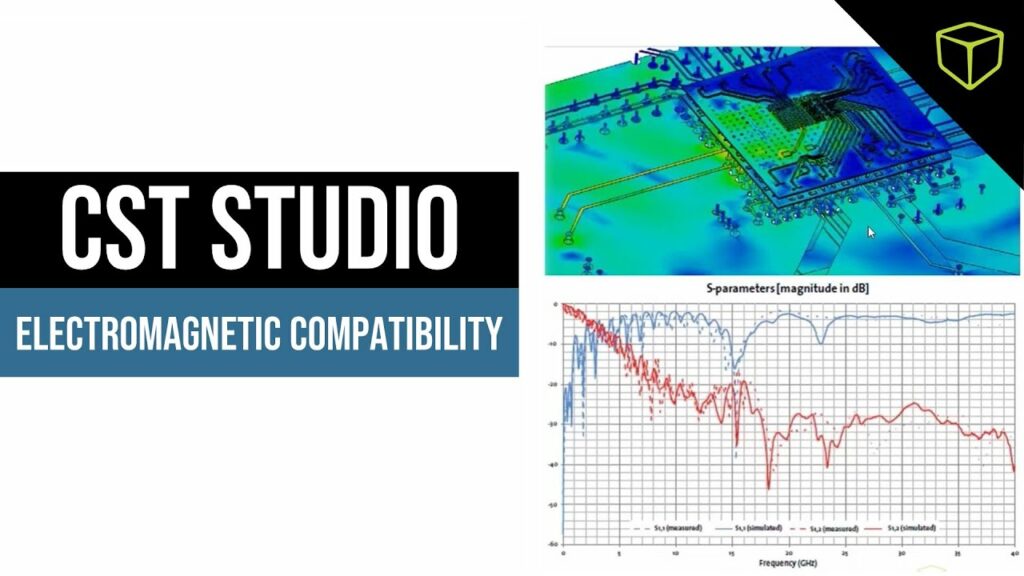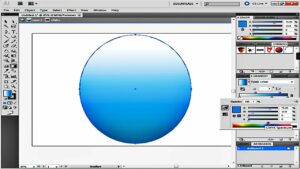Mastering Electromagnetic Compatibility (EMC) Analysis with CST EMC Studio: A Comprehensive Guide
James April 15, 2024
Introduction: Electromagnetic Compatibility (EMC) analysis is crucial in ensuring that electronic devices and systems operate reliably and coexist without interference in their electromagnetic environment. CST EMC Studio, developed by CST – Computer Simulation Technology, is a powerful software tool designed to assist engineers in performing EMC analysis and addressing electromagnetic compatibility issues. By leveraging CST EMC Studio’s advanced simulation capabilities, engineers can analyze electromagnetic phenomena, assess electromagnetic interference (EMI), and optimize system designs to achieve EMC compliance. In this comprehensive guide, we will explore the principles, methodologies, and best practices of performing EMC analysis in CST EMC Studio, empowering engineers to design robust and EMC-compliant electronic systems.
Section 1: Introduction to EMC Analysis
1.1 Overview of Electromagnetic Compatibility: Electromagnetic Compatibility (EMC) refers to the ability of electronic devices, systems, and equipment to operate reliably and coexist without causing or being susceptible to electromagnetic interference (EMI) in their environment. EMC analysis involves assessing the electromagnetic behavior of devices, predicting EMI/EMC issues, and implementing design measures to achieve EMC compliance and reliability.
1.2 Importance of EMC Analysis: EMC analysis is essential for ensuring the reliable operation, safety, and performance of electronic systems in various applications, including telecommunications, automotive, aerospace, medical devices, and industrial automation. By performing EMC analysis, engineers can identify and mitigate potential sources of electromagnetic interference, reduce the risk of EMC-related failures, and ensure compliance with regulatory standards and industry requirements.
Section 2: Overview of CST EMC Studio
2.1 Introduction to CST EMC Studio: CST EMC Studio is a comprehensive software suite developed by CST – Computer Simulation Technology for electromagnetic compatibility (EMC) analysis and simulation. It provides a range of tools and features for modeling, analyzing, and optimizing electromagnetic phenomena, including radiated emissions, conducted emissions, electromagnetic susceptibility, and electromagnetic shielding.
2.2 Key Features and Capabilities: Familiarize yourself with the key features and capabilities of CST EMC Studio, including electromagnetic field solvers, simulation models, boundary conditions, and post-processing tools. Explore CST EMC Studio’s advanced simulation techniques, such as finite element method (FEM), method of moments (MoM), and finite difference time domain (FDTD), for accurate and efficient EMC analysis.
Section 3: Performing EMC Analysis in CST EMC Studio
3.1 Model Setup and Geometry Definition: Start by setting up the EMC analysis model in CST EMC Studio by defining the geometry, materials, and boundary conditions of the electronic system under investigation. Import CAD models, drawings, or schematics of the device or system into CST EMC Studio and create a three-dimensional (3D) geometric representation of the system components, including circuit boards, components, cables, and enclosures.
3.2 Material Properties and Boundary Conditions: Specify material properties, electrical properties, and boundary conditions for the EMC analysis model in CST EMC Studio to accurately represent the electromagnetic behavior of system components and their interactions with the surrounding environment. Define dielectric properties, conductivity, permeability, and surface properties of materials, as well as boundary conditions such as radiation boundaries, symmetry planes, and excitation sources.
3.3 Electromagnetic Field Simulation: Perform electromagnetic field simulation in CST EMC Studio to analyze the distribution of electromagnetic fields, currents, and voltages within the electronic system under various operating conditions. Use CST EMC Studio’s electromagnetic field solvers, including frequency domain solvers, time domain solvers, and hybrid solvers, to compute electromagnetic fields, induced currents, and radiated emissions in the system.
3.4 EMI/EMC Analysis and Optimization: Conduct EMI/EMC analysis in CST EMC Studio to identify potential sources of electromagnetic interference, assess susceptibility to external interference, and optimize system designs to achieve EMC compliance. Analyze radiated emissions, conducted emissions, near-field coupling, far-field coupling, and electromagnetic shielding effectiveness using CST EMC Studio’s analysis tools and post-processing capabilities.
Section 4: Advanced EMC Analysis Techniques
4.1 EMC Filter Design and Optimization: Design and optimize EMC filters, ferrite chokes, and passive components in CST EMC Studio to suppress electromagnetic interference and improve EMC performance of electronic systems. Use CST EMC Studio’s filter synthesis tools, impedance matching techniques, and optimization algorithms to design custom filters that attenuate unwanted frequencies and mitigate EMI/EMC issues effectively.
4.2 Electromagnetic Shielding Analysis: Perform electromagnetic shielding analysis in CST EMC Studio to assess the effectiveness of shielding enclosures, shields, and barriers in attenuating electromagnetic fields and preventing electromagnetic interference. Model electromagnetic shielding structures, define material properties, and analyze shielding effectiveness using CST EMC Studio’s simulation capabilities and visualization tools.
4.3 Signal Integrity and Crosstalk Analysis: Analyze signal integrity and crosstalk effects in high-speed digital circuits, transmission lines, and interconnects using CST EMC Studio. Simulate signal propagation, impedance mismatch, reflections, and crosstalk coupling in PCB layouts, cable harnesses, and multi-layered structures to identify potential signal integrity issues and optimize system designs for improved EMC performance.
Section 5: Best Practices for EMC Analysis in CST EMC Studio
5.1 Model Validation and Verification: Validate and verify EMC analysis models in CST EMC Studio through comparison with measurement data, empirical data, or analytical solutions to ensure model accuracy and reliability. Conduct model validation tests, sensitivity analyses, and convergence studies to assess model fidelity, identify discrepancies, and improve confidence in simulation results.
5.2 Parametric Studies and Sensitivity Analysis: Perform parametric studies and sensitivity analyses in CST EMC Studio to evaluate the effects of design parameters, material properties, and boundary conditions on EMC performance and susceptibility. Explore design alternatives, optimize parameter values, and assess sensitivity to variations in operating conditions using CST EMC Studio’s parametric modeling tools and simulation capabilities.
5.3 Compliance Testing and Certification: Use CST EMC Studio to perform compliance testing and certification simulations to assess EMC compliance with regulatory standards, industry specifications, and customer requirements. Conduct pre-compliance testing, certification simulations, and electromagnetic compatibility assessments to ensure that electronic systems meet EMC requirements and achieve certification for commercialization and deployment.
Conclusion: Performing electromagnetic compatibility (EMC) analysis in CST EMC Studio offers engineers and designers a powerful toolset for analyzing, simulating, and optimizing electronic systems to achieve EMC compliance and reliability. By mastering the principles, methodologies, and best practices outlined in this guide, users can leverage CST EMC Studio’s advanced features and capabilities to design robust, EMC-compliant electronic systems that meet regulatory requirements, industry standards, and customer expectations. With proper training, collaboration, and adherence to best practices, CST EMC Studio empowers engineers to address complex EMC challenges effectively and ensure the reliable operation and performance of electronic devices and systems in various applications.




